- Industry Guides
- How Marketers Can Overcome Challenges in the Food and Beverage Industry
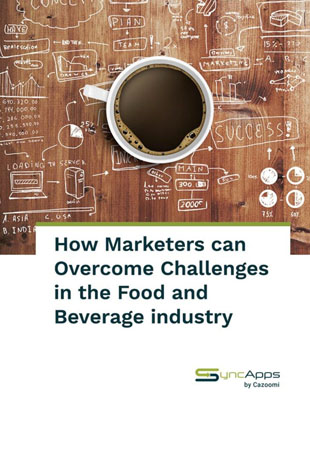
The areas this guide covers include:
- Challenges Facing Marketing In The Food And Beverage Industry
- Consumer Preference
- Brand Positioning
- Targeting Customer Priorities
- Personalizing The Customer Experience
- Overcoming Challenges In The Food And Beverage Industry
Executive Summary
Imagine walking into a grocery store and receiving personal recommendations immediately as you get into their door. You also get to check out in seconds and pay without having to look for your cards or cash.
Now imagine sitting at the comfort of your home and having groceries and beverages delivered at your doorstep within 24hrs. This is already happening and it’s all due to technology. Technology has transformed how industries operate.
However, in the food and beverage industry, things are somewhat moving slowly. Marketers are still facing significant challenges since the lines between the physical and the digital worlds are still blurred.
Shoppers are getting used to getting recommendations based on their search history, interests, and needs on Netflix. But some retailers seem to have missed this memo.
Amazon provides customers with access to a wide selection of products, reviews, and recommendations based on purchase history and search. Shoppers have become accustomed to this kind of experience and are increasingly expecting (even demanding) the same from the food and beverage industry.
It’s no surprise that only savvy retailers remain competitive in this billion-dollar industry simply because they have accepted to leverage technology. They are enhancing the most important aspect of business – customer shopping experience.
Consumers no longer shop only offline or online; they are taking an omnichannel approach and expect their brands to do the same.
This paper looks at how marketers in the food and beverage industry can overcome challenges that are preventing them from leveraging technology.
We will analyze how they can make customer shopping experiences easier and more convenient, and the benefits of leveraging technology. The paper also examines how improving customer experience leads to increased visits and a higher return on investment.
Introduction
Marketing for the food and beverage industry is interesting, to say the least. And it comes with its own distinct challenges.
For example, it’s tricky to create a sense of urgency, like in other sectors, because Mother Nature does that for everyone. Sure, you can create yummy ads that make hungry people even hungrier. But if the viewer just had a hearty meal, you’ve lost them.
It’s also an innovative industry since manufacturers are working at ways to get their products to the shelves in the shortest time without being held up by sector regulations and product trials. Powerful retailers (think big supermarket chains) can also test a product in their store and if it doesn’t work out, remove it from the shelves immediately.
However, despite this, the industry is facing some significant challenges. Reaching customers while still managing to beat a saturated market, high competition, low prices by retailers, low margins, and regulations that keep changing in the safety and export spheres are some of these challenges. Each day is a challenge on how best to make your brand known and earn customers’ trust and loyalty.
Consumer demands also keep changing, and it’s becoming harder and harder for brands to stand out. However, with the right strategies and tools, marketing in this industry can become simple. Staying up to date with emerging technologies and with the ever-changing consumer preferences is what keeps a food and beverage business competitive.
Top Challenges Marketers in the Food and Beverage Industry
Are Facing Marketers in the food and beverage industry face all the challenges their peers face, too. Plus quite a few distinct ones.
Let’s take a look at the areas to focus on in 2019 and beyond.
1. Consumer PreferencesFor some time now, the digital revolution has been changing how we live our lives. It has also extended to how we consume our foods and beverages. The smartphone has made it easy for consumers to do their shopping on the go, make mobile payments, and conduct research. Mobile usage offers a huge challenge to marketers since they are always in a race to provide reliable, efficient, and accessible online experiences.
A recent survey revealed that 2018 had 130 percent more hungry consumers around the world ordering meals on mobile than in 2016. The same period also saw downloads of the top delivery apps grow by 115 percent. These orders are widely expected to triple by 2020 since mobile has become the trending, must-have commerce channel.
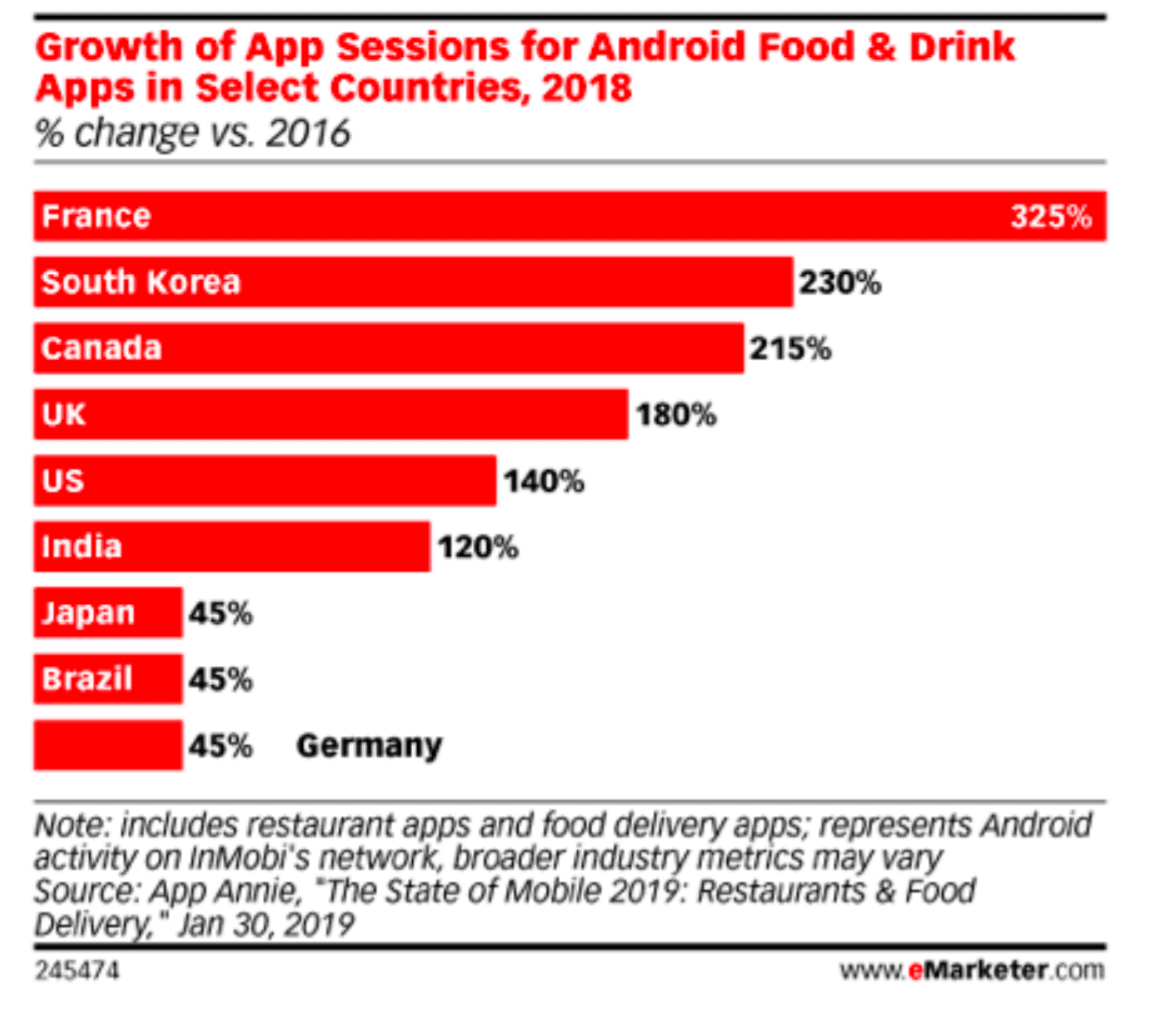
Image Source: Emarketer
Research shows that consumers have adopted mobile commerce as an essential shopping channel. Mobile commerce is growing at a 300 percent rate faster than traditional e-commerce.
A good marketer will use this kind of intel to gain insight into the type of research potential customers are conducting, what browser they are using, and what purchases they make, even while standing in the store.
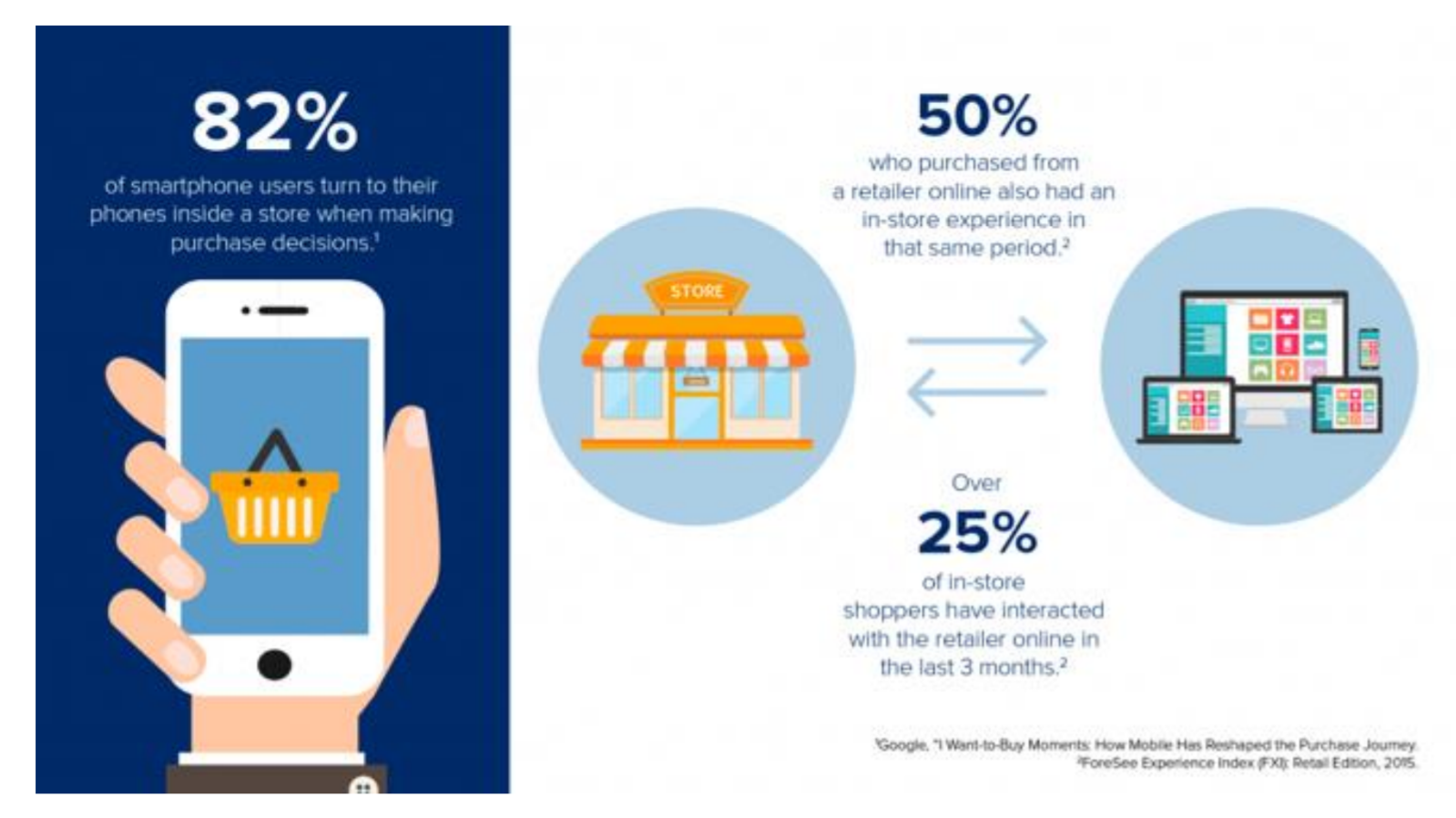
Image Source: Moovweb
With this information, marketers can also identify opportunities for customer retention across all their marketing channels. They must understand that before a customer makes a purchase, they’ll most likely start with mobile shopping or at least browsing.
It’s, therefore, imperative to know how to maximize mobile opportunities. Content optimization and customer interaction are two of the main directions marketers in food and beverage should consider.
Before a consumer makes a purchase, they will first and foremost do some research, compare prices and use a store locator to find the nearest shop or supplier.
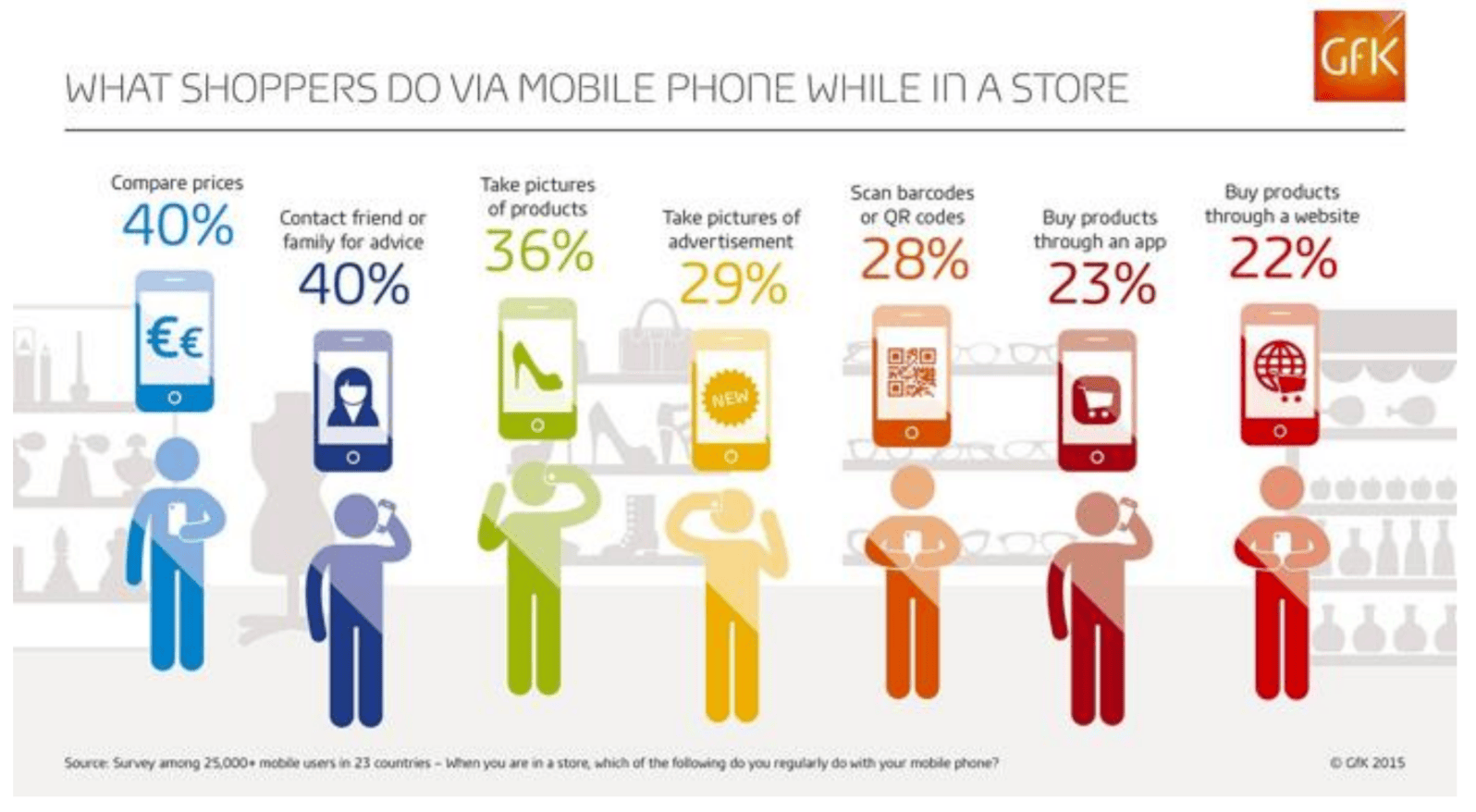
Image Source: GFK
When consumers are doing mobile searches, 62 percent of them expect to see product pictures. 48 percent want a mobile-friendly website while 44 percent want to have product descriptions readily available.
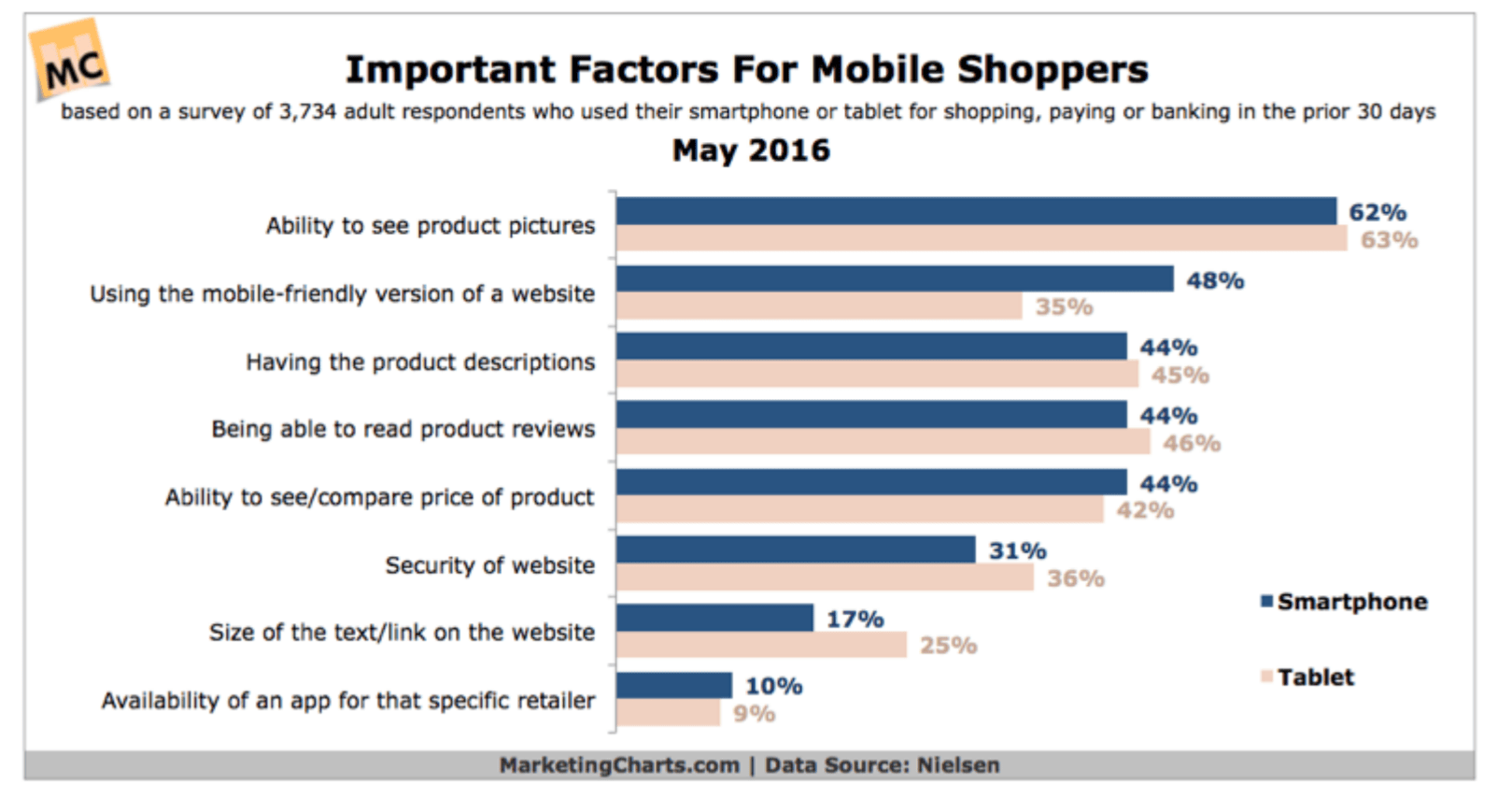
Image Source: Nielsen
They also want the food and beverage industry to match their lifestyle. After all, what could influence what you eat and drink more than your lifestyle? Modern lifestyles have now blurred the lines between snack and mealtime.
Consumers are now mostly opting for eat-as-you-go products. This is mainly because of the highly mobile nature of their daily schedules. According to research, the global on-the-go breakfast market will grow to $1,699 million by 2024 from $1,149 in 2017.
This compound annual growth rate of around four percent comes against a backdrop of consumers changing their lifestyle patterns, their food habits, and must-deal-with crazy work schedules daily.
Consumers also don’t want to go to a lot of trouble. They want convenience. The rise of the internet, a fast-paced lifestyle, and challenging working hours are making the lives of consumers even more complicated.
The World Health Organization terms it as the 21st-century health epidemic. Consumers consider their lives more thinly stretched and are continually finding convenient solutions that simplify their lives.
When it comes to the food and beverages they buy, convenience is not only about packaging, store formats, or products. It also means better engagement strategies, use of the latest technology, enhanced encounters, interactions, and actions that make their grocery shopping more efficient.
Consumers want products, processes, spaces, and places that aid them in overcoming their everyday obstacles.
They want automated, intelligent, shortcuts, cheats, and digitized options. This growing demand gives marketers in the food and beverage industry a host of opportunities. They, therefore, need to provide integrated, innovative, and convenient solutions to address these ever-changing consumer wants and needs. Marketers must be willing to even deliver the customer’s purchase right at their doorstep, within the shortest time and for a great price.
And with the traditional convenience store concept rapidly becoming obsolete, most marketers are increasingly losing out on opportunities not only to grow their businesses but also to build brand loyalty. In order to effectively meet customer preferences, you seriously have to think like the customers, know what they want, and provide them with those products fast.
2. Brand PositioningThe difference between branding in the food and beverage industry and branding in other industries is that the former relies heavily on the senses.
Does your product have a lasting impression in terms of flavors and taste?
The first step towards marketing your food or beverage is enticing your customer’s visual palates. Can your customers pick your product from among many due to its excellent taste or presentation? You must know what your customers want and solve that itch with great taste and flavors. Once you’ve created great taste, then:
Communicate effectivelySpeak your customer’s language. If you are targeting children with your treats, then your branding, messaging should align with their persona. (But also keep in mind that kids are the initiators, while the parents are those who make the actual purchase decision.)
The whole brand – from the name, print, logo, ads, and media should demonstrate why you are different and better than your competitors.
Package your product rightBooks are still judged by their covers, even today. In food and beverage, your product is judged by its packaging.
The packaging is actually an umbrella name. The way the “package” feels, looks, and smells is just the beginning. The logo, the colors you use, the way you present nutritional facts – all these can make or break your product.
Have a strong unique selling pointMake sure your USP also appears on your packaging. You want to ensure continuity.
If your customer saw a commercial for the “100% natural orange juice” on TV, you want to make sure they know which juice is. Yours! So print your USP on all labels.
Identifying a unique selling point comes from asking the question “why would customers buy from me?”“Because I am the only/the best/the most affordable…”
These USPs change depending on the type of customer you are handling. For example, a wine store can offer free same-day delivery to customers in a specific location and a 10 percent discount to customers who spend more than, say $5,000. These two USPs cater to a customer who needs fast delivery and one who is cost-conscious, respectively.
Use social media and unique contentUse your blog to communicate and engage with potential customers. Your blog can be used to drive traffic and increase engagement on social media.
And vice versa. Never dismiss a channel before you test.
Some people think that corporate blogs only work in the B2B space. This couldn’t be further from the truth. If you write on topics that people care about (and we all know how hot topic nutrition is nowadays!), your blog can turn into a brand loyalty gold mine.
Integrate social media and ensure you also have a mixed marketing strategy. Have messages that cut across both traditional and modern communication channels for effectiveness. Ensure each post on your platforms makes an impact.
Eighty-four percent of online shoppers will review one social media site before they make a purchase. So you can’t really afford to ignore it, right?
However, simply being on social media doesn’t ensure success. Take a look at what your audience really cares about. Note their complaints and their pain points. Social listening is the only way to build a strong food and beverage brand.
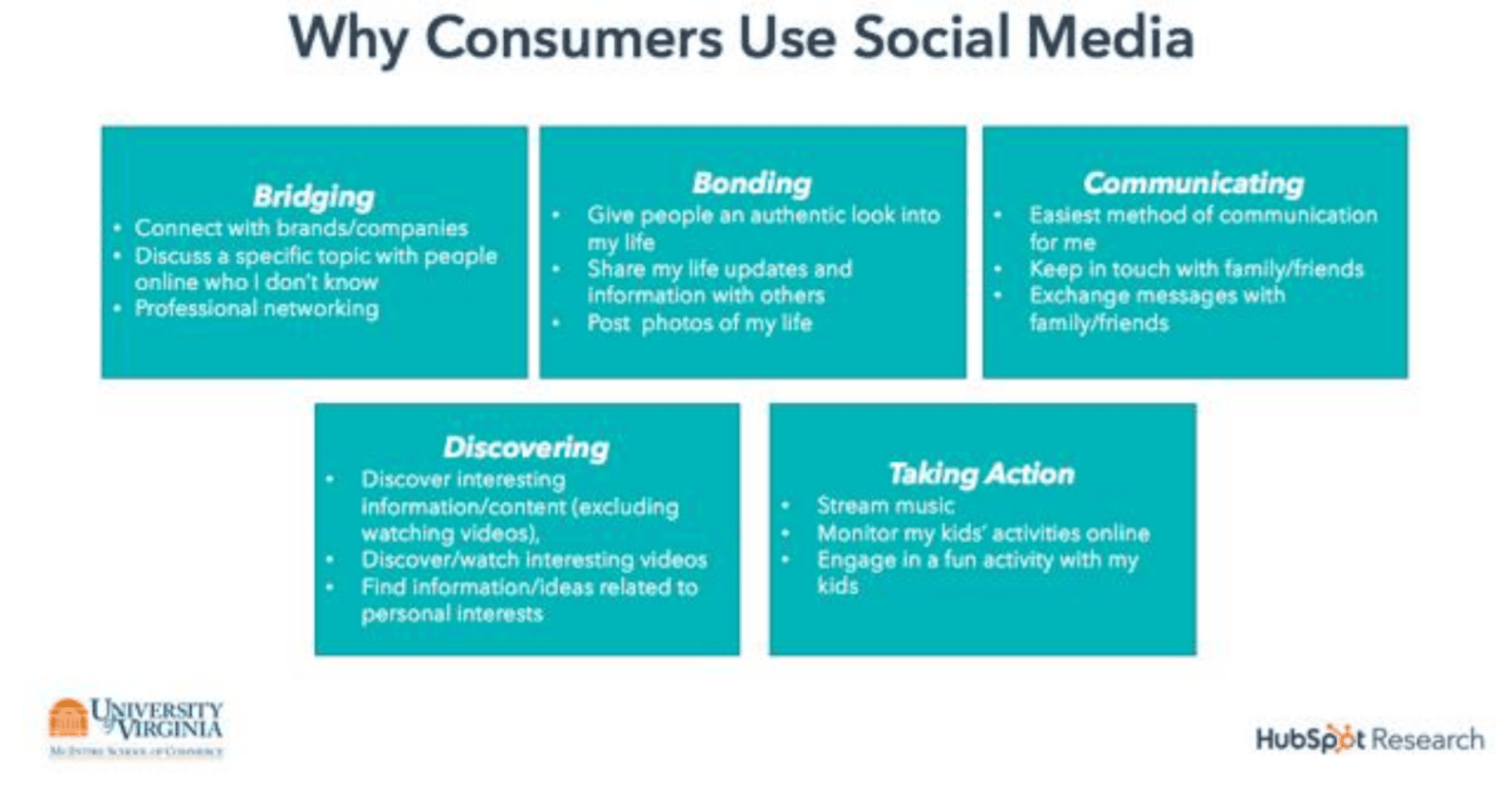
Image Source: HubSpot
The image below depicts the consumer’s preferences for social media channels according to their goals. Take this chart seriously and make sure that your channel strategy is aligned with consumer needs.
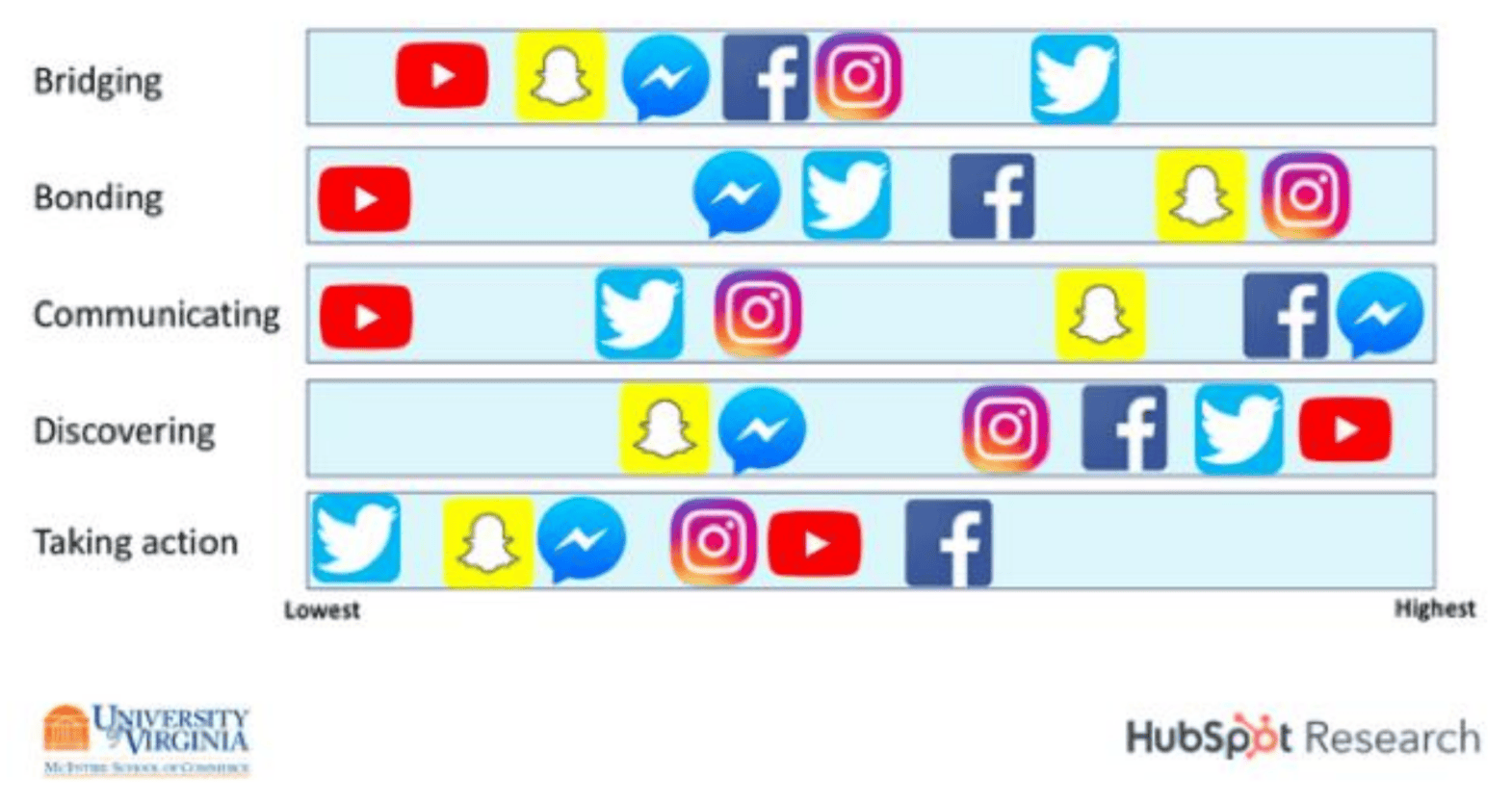
Image Source: HubSpot
This is your safest bet to reaching more people. Forty percent of users made a purchase as a direct result of tweets from influencers. Influencer marketing is also the fastest-growing way to acquire and build an online customer base.
Email marketingAn email marketing strategy ensures that you deliver relevant and timely marketing information to your consumers.
Email marketing platforms are easy to handle, and, when integrated with your other tools like CRMs, they can make a world of difference in your strategy.
Keep them informed about new products, promotions, surveys, competitions, coupons, and exciting events. Email marketing keeps your existing customers engaged and takes your potential customers through the buying funnel.
The biggest challenge for marketers in the food and beverage industry is differentiating themselves in an oversaturated market. So much innovation has happened and there are so many emerging brands. Plus, there are a lot of players producing almost identical products.
It’s always a good thing to have several options to choose from. But when a customer searches for best beers, for example, and finds over 1,000 options, they become overwhelmed – a phenomenon referred to as ‘choice overload’.
When faced with it, the consumer suffers the negative emotional, psychological, and behavioral effects of having too many options. They suffer buyer remorse especially if dissatisfied with the choice they make or behavioral paralysis, where they don’t make any choice at all.
You can, however, help your customers decide by assisting them to streamline their choices and understand their preferences. For example, explain qualities that make your product distinct from the rest using informative and engaging content on your website, blog, or social media platforms.
Provide information that cuts through the whole consumer buying process. For example, guide them through when they decide they want a beer when they finally choose to purchase a certain brand. Simplify the choices and make it easy for them to make decisions. It will also give them time to make a choice that best fits their budget, interests, and needs.
3. Targeting Customer PrioritiesNo one will purchase your food or beverage if they don’t think they need it. It is not that easy to convince someone that they need a product unless you understand their pain points, interests, and needs.
Understanding customer needs is the secret to any successful business. This rings true in any industry, but especially in food and beverage. Consumer preferences change as quickly as trendy diets, so you have to be on your toes at all times.
Carry out continuous market research and find out how to appeal to your customers, how to tailor your products and messages to maximize effectiveness, and how to make sure your marketing efforts are optimized to reach your potential buyers.
Next, create customer profiles. Some of the profiles will share characteristics, and you can craft messages using these profiles or traits. This includes information on their age, gender, location education level, income level, ethnic background, occupation, and marital status. Find out their interests, values, attitudes, hobbies, and lifestyle preferences.
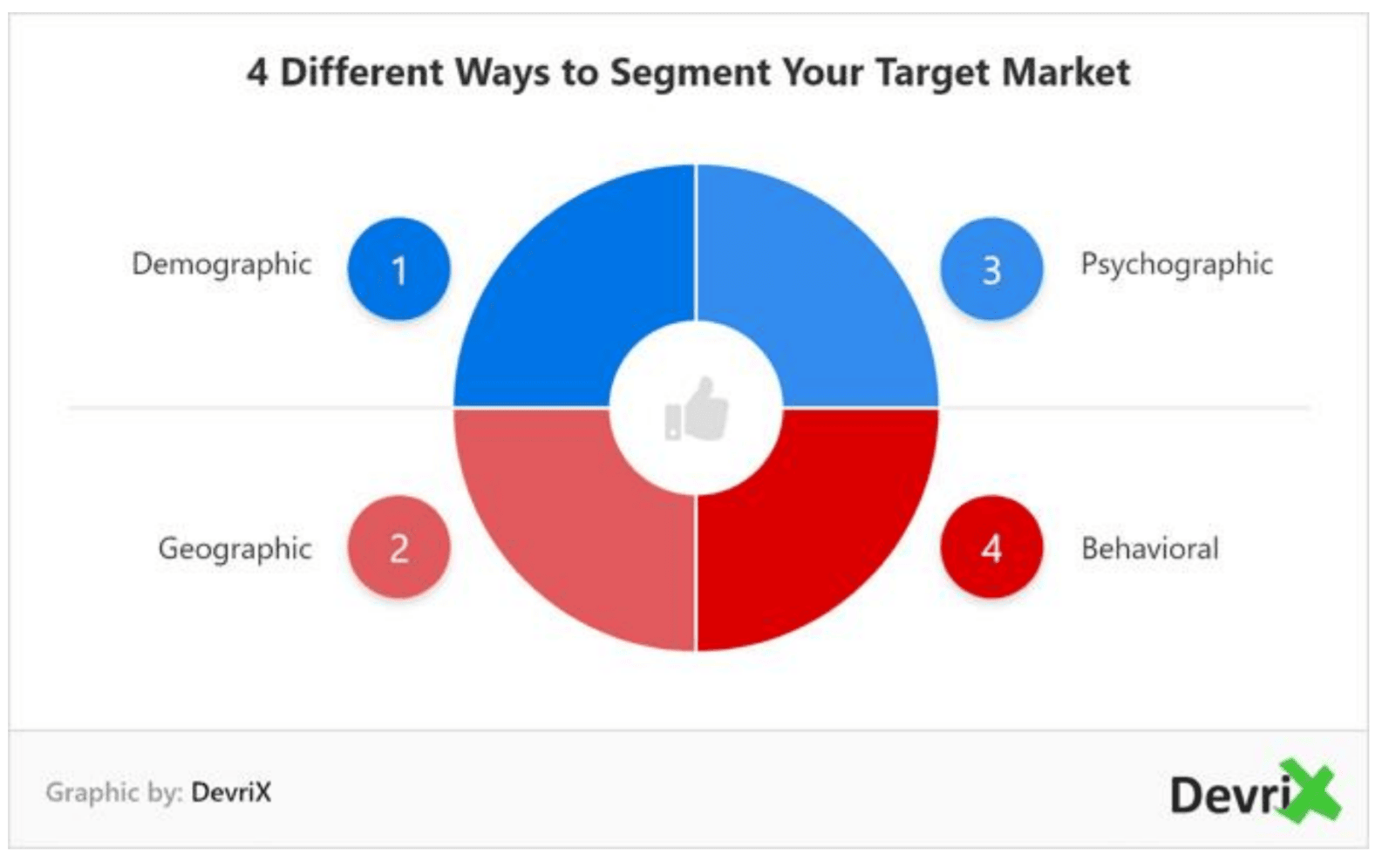
Image Source: DevriX
Narrow down to the specifics by:
- Finding out who your customers are, what they buy from you, and why they do it. Talk to your customers. Find out what they want, what their other needs are, what they would like improved, and why they are not buying certain products from you. This information gives you an insight into what you can improve and how you can present your products in the future. Understanding their challenges allows you to offer better solutions.
- Knowing your target customers also means knowing when they purchase, how they like to purchase (from the store, website or on social media), how much they can afford, why they buy (what makes them tick?), their expectations (ensures you don’t disappoint them), and their thoughts on your competitors. Information on your competitors keeps you ahead of the game.
The better informed you are about a customer, the better services you will offer them. Identifying specific target audiences ensures the decisions you make are all about satisfying your customer needs. Targeted marketing ensures that:
- Your messages resonate with your audience
- You attract and convert quality leads
- Your brand stands out from your competitors’
- You build customer trust and loyalty
- You stay focused on your goals
- You improve products
Consumers adopt technology that makes their shopping experience easier. They drive demand and want an integrated shopping experience. A unique platform, ideally.
How can you make sure that you are providing that platform?
Start by informing your consumers.
By providing information and making it easy for consumers to access it, marketers can help consumers make more informed and thus, better, decisions.
Having access to information improves a customer’s experience. According to research, consumers want to access products, their specifics, and descriptions without having to talk to a salesperson. They want technology that allows them to click on a product from a mobile device and collect it at the store or have it delivered to their house.
Marketers in the food and beverage industry should adopt technology in a quest to provide personalized, convenient, and engaging experiences that seamlessly move from online to offline consumer worlds.
Expertly executed personalized campaigns increase ROI, customer acquisition, brand loyalty, and revenue. Marketers, however, find omnichannel messaging challenging. Most of them use identical messages for all channels instead of customizing them based on customer actions.
Customers expect that they can switch between the various platforms- mobile, web, apps, social, desktop, etc. and experience consistency in brand messaging.
According to a 2017 state of marketing report by Salesforce, customers will walk if they do not receive personalized messages.

Image Source: Salesforce
Providing consistent customer experience allows marketers in the food and beverage industry to stay competitive. However, effective personalization requires data. The good news is that consumers are willing to provide data to get more of these experiences.
This is according to a survey by Salesforce. It showed that 58 percent of Gen X and 63 percent or Millennial consumers would share data for personalized discounts and offers. They want a marketing experience that makes it easier for them to shop. They expect companies to understand their expectations and needs.
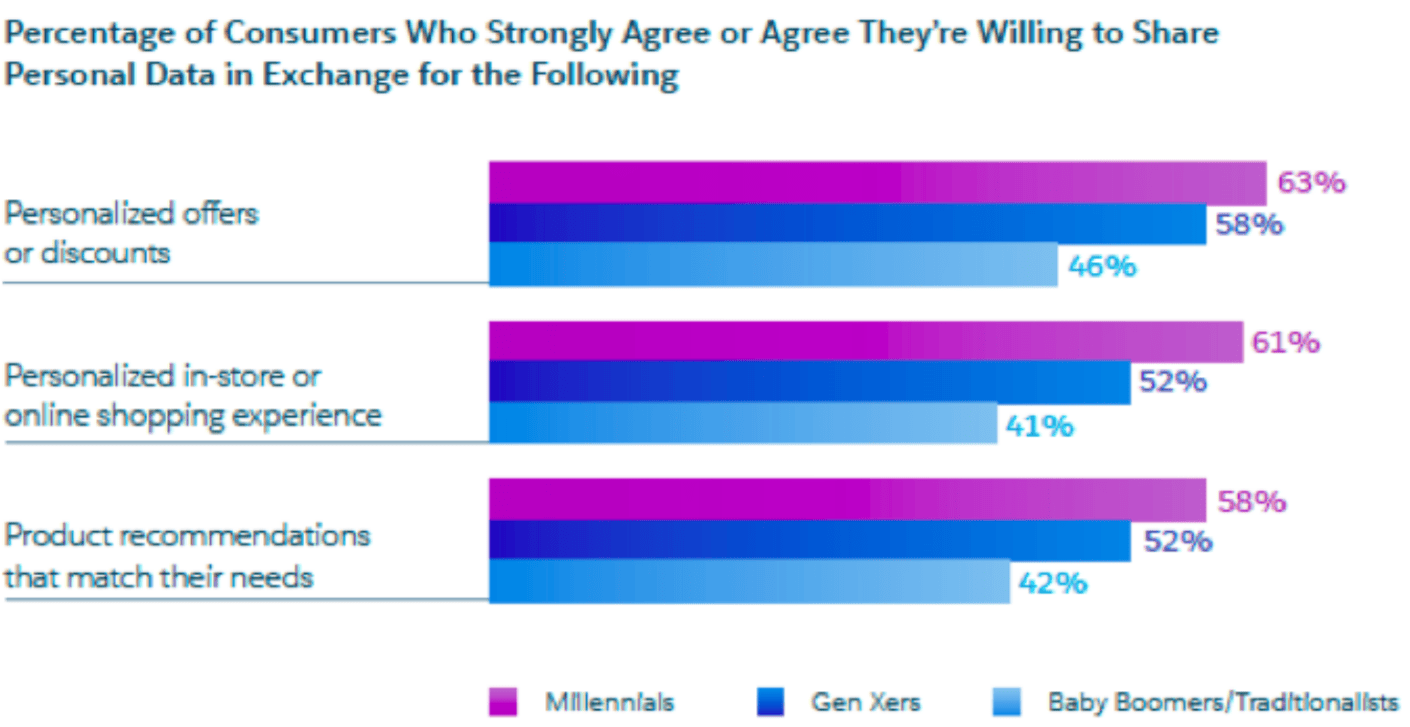
Image Source: Salesforce
As a marketer, your role is to analyze how the individual customer shops, their needs, interests, and when and how to reach them. Analyze the demographics, psychographics, and digital dimensions to understand their motivations and intentions. Use this information to create personalized messages for your consumers. It makes customers feel appreciated as individuals and when satisfied, customers turn loyal.
How do you create a connected journey for the customer across all touchpoints with your brand? You have to think about using video, SMS, email, mobile apps, sponsored content, and many others, so it’s not an easy task.
High-performing marketing teams concentrate on ‘how’ not on ‘how many’. Create messages that are driven by customer expectations.
You can do this by creating a connected customer journey on all channels and touchpoints. This way, if Jane purchases a product via email, she will not continue to see the same product on her Facebook page. Jane may start to think that the company does not value her business since she already purchased the item.
Ninety-one percent of high-performing marketers agree that a connected customer journey impacts customer loyalty positively. It also leads to revenue growth according to another 89 percent.
This is where integration comes into play.
You cannot provide your customers with the seamless experience they are expecting if you don’t have a bird’s eye view over all your marketing channels.
To follow up on Jane’s example above: imagine how much better your marketing campaigns could get if you knew precisely what each customer viewed on your website, how much time they spent on each page, which emails they opened, and how many reviews they read before buying a product.
Sounds too good to be true? It’s not! It’s just seamless integration.
When your email is integrated with your social media channels, CRM, and other mission-critical tools, your clients get a seamless cross-channel experience. You build a relationship with them, not just a seller-buyer rapport.
Overcoming Challenges in the Food and Beverage Industry: Conclusion
Food and beverage companies must change how they market their products. It’s the customer that demands it.
They also need to get out of the traditional marketing comfort zone. The changing landscape that has the consumer in charge demands that they respond by making changes to ensure they remain competitive.
This growth is mostly driven by the Millennials and Generation Z who grew up with digital technology. They are comfortable with and enthusiastic about technology. Online shopping is, therefore, part of what Gen Zers have grown up with. This is why they are willing to use any shopping platform available.
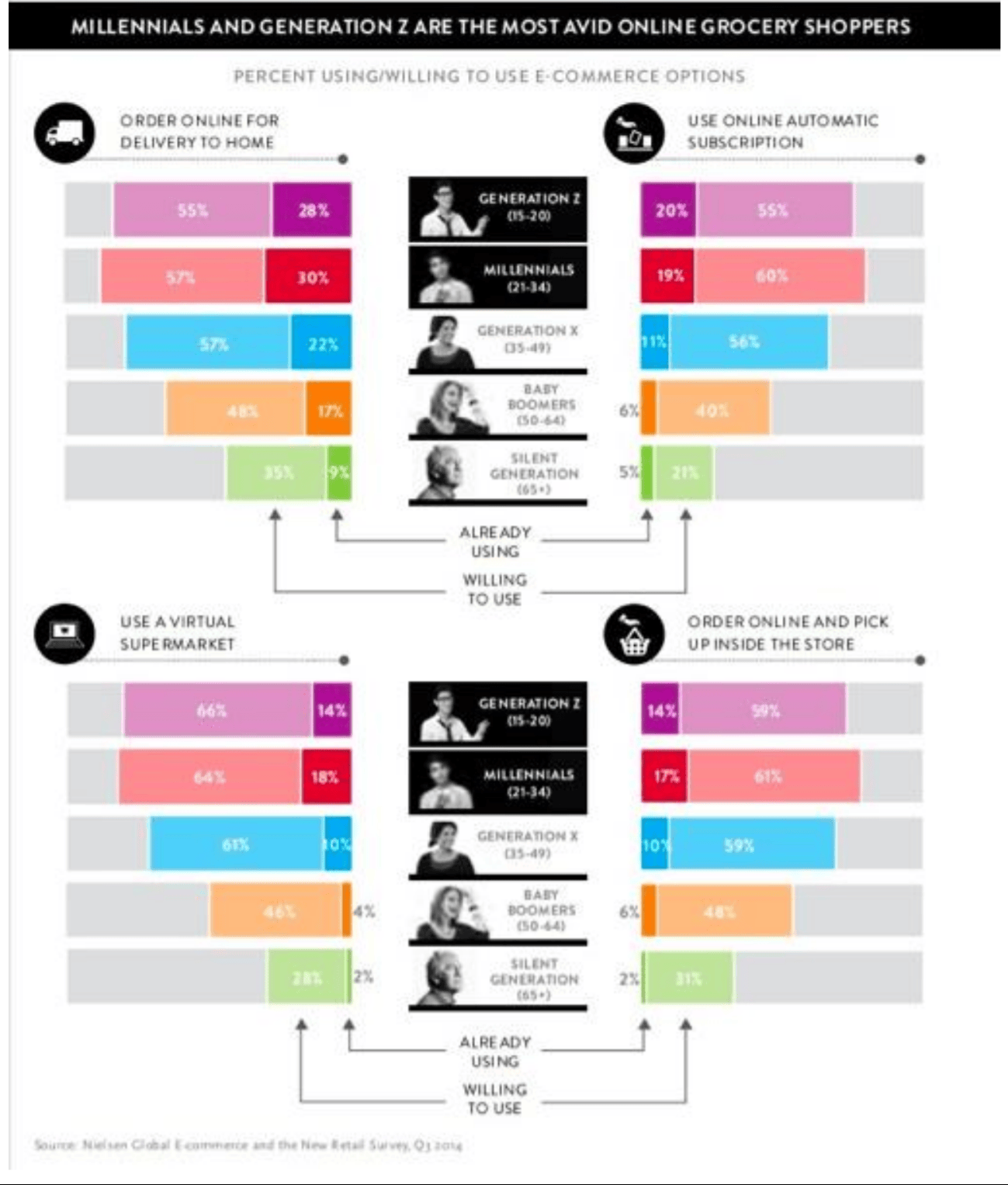
Image Source: Nielsen
To overcome challenges in the industry, you must take advantage of exciting opportunities like:
- Knowing what your consumer wants/needs. Respond to these needs through adopting innovative solutions like food delivery kits, home deliveries, in-store pickups, virtual supermarkets, and automatic subscriptions.
- Creating a good brand image and position it in the customers’ minds using unique selling points.
- Packaging your products using creative logos, designs, and food presentations.
- Being available on the social media channels where your customers are and initiate meaningful conversations with them.
- Targeting customers using personalized messages through email marketing and social media.
- Using your website and/or blog to solve all the customer pain points and answer all their question on your product.
- Using data to improve marketing and deliver better services to customers.
- Adding value to your customer’s life and communicating your value proposition clearly.
- When marketing, consider all channels holistically. They all have unique uses, challenges, and expectations. Note the differences between online and offline marketing and keep up with the channels your customers love – no need investing in obsolete ones.
- Measure and adjust. Monitor performance and improve on what’s working and change what’s not working.
About Cazoomi
Cazoomi allows Foood and Beverage marketers to integrate critical everyday business data through our SyncApps integration platform. Integrate eCommerce, CRM, Marketing Automation, Financials, and Support software to the software you use today. We offer more than 150+ integrations and help you set up, explore your options, and guide you through usage.
SyncApps by Cazoomi enables Foood and Beverage businesses to deploy software as a service for their Financials, handle eCommerce, Support, CRM, and Marketing integration with ease and at a price point built for any organization.
For more information, visit https://www.cazoomi.com/



